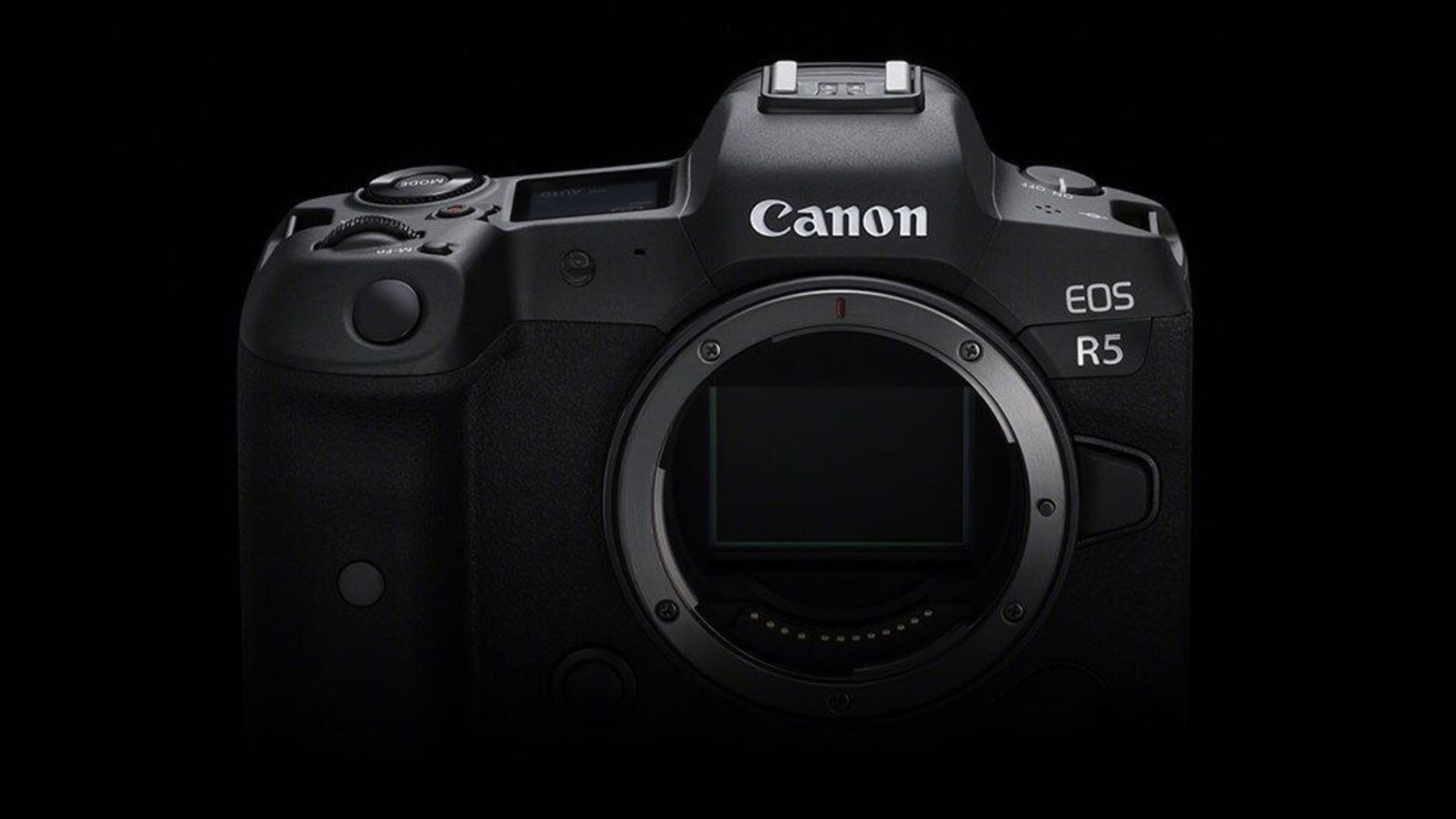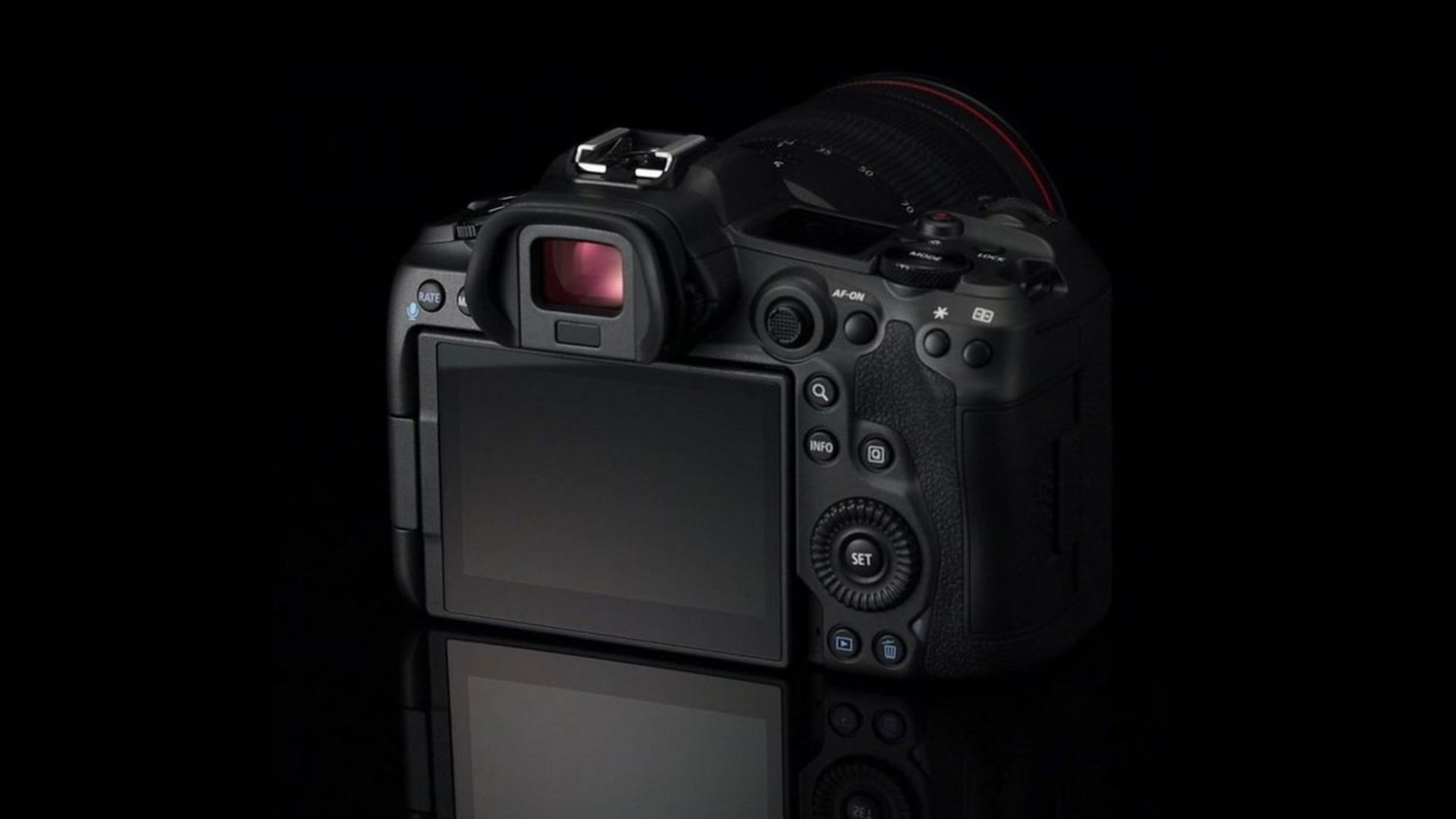The new flagship Canon mirrorless camera, the EOS R5, is here with 45MP stills and 8K movie recording. Is this the perfect camera for hybrid shooters that need high-quality photos and videos in one device?
The EOS R5 has so many groundbreaking features all packed into one tidy little 680 g package that it’s hard to know where to start. The Dual Pixel AF has a deep learning mode that can track people and animal heads, its 45MP images are full of detail, and the 8K 60 fps raw movie recording blends the line between mirrorless and cinema cameras. Pair all that with the ability to shoot down to EV -6, the fastest autofocus of any camera in the world, and your choice of 5,940 selectable AF areas, and it’s set to shake up the industry big time. Let’s dive in and take a look at why this is probably the most anticipated camera of the year.
Great Stills Quality

The Canon EOS R5 boasts a weighty 45MP image sensor. Image credit: Canon
The high-resolution 45MP stills means incredible quality when combined with sharp RF lenses. The R5’s new DIGIC X processor means better noise handling over the EOS R, despite the 50% increase in resolution, and the ability to shoot at 12 fps mechanical, or 20 fps electronic.
Next Level Image Stabilization
The R5 has 5-axis, and 5-stop in-body image stabilization (IBIS), which holds every photo and video rock solid when shooting handheld. If you want more though, pair it with an RF lens to get up to 8 stops maximum image stabilization.
Amazingly Clear Viewfinder

The EOS R5's viewfinder is the closest to an optical viewfinder in a Canon Mirrorless camera yet. Image credit: Canon
The EVF has a 100% width and height coverage, meaning you can place your autofocus point at any spot in the viewfinder thanks to the 5,940 selectable AF areas available. At 5.76 million dots and running at 120 fps, it looks more like an optical viewfinder than any other EVF found in a Canon.
Video Quality Is Professional Level

The EOS R5's video quality is incredible thanks to the 12 bit depth, and 8K uncropped raw footage capture. Image credit: Canon via TechRadar
The R5 can shoot at up to 8K 12-bit raw, and that’s 8K DCI, not UHD, which means extra pixels along the horizontal axis. It even outperforms the R6’s 4K, because it can oversample thanks to the increased resolution on the image sensor.
Cinema Level Video Editing
Instead of just importing a compressed video file and making color and tone adjustments from there, use the Canon Log system to match up color profiles with footage shot on other Canon cine cameras to keep things visually consistent.
Edit Portraits Without a Computer

The Canon EOS R5 offers in-camera Portrait Lighting retouching abilities. Image credit: Canon
Using the on-board Portrait Lighting feature, users can edit Dual Pixel raw files right inside the R5, adding a secondary virtual light source to portraits. Users are able to adjust the brightness, intensity, and position of the lighting to fill in shadows.
Lightning Fast Write Times
Although the body comes with an already fast SD UHS-II memory card slot, it also has a CFexpress slot, which can reach speeds of up to 1400 MB/s. That’s over 4.5x the speed of an SD UHS-II slot (which is the only slot in the R6).
There's plenty more to be excited about the Canon EOS R5, but this top seven list is definitely a good starting point for that wondering whether to get stuck into the Canon mirrorless system.







I need at least 10 reasons to make it even :P
I have 4849 (€) reasons not to buy
Canon R5 looks great for pics at 45MP but even with 8k video, I'd still prefer the BMPCC 6K with it's full size hdmi port, ef mount, record to 1 tb ssd drive (instead of super expensive cfexpress cards) and ac out for long vmount battery power. No 20 minute recording limit either.
And for me it wouldn't be $3,899.00, it would be $4,597.99 once you add the ef adapter for $99 and $599.99 for one SanDisk 512GB Extreme PRO CFexpress Card Type B. I wonder how long I can record at 8k raw before the card is full.
Sure it has lots of features but I shoot fashion or glamour in a studio setting so not really shooting 500 pics of a hawk with a snake in its mouth or chasing kids or a dog around the yard. I was happy with the 5d mark 3 but fell for the 4k feature on the mark 4 (mjpeg video size sucks) so not really looking for another photography / video camera again. I shoot pics with the mark 4 and video with the BMPCC 6K. Which instead of spending $4,597.99 on an R5, I'll just pick up another 6k for less than 2k.
Exactly... I don't have such CFExpress cards either, and they're not cheap. And I'm not ready to get separated from my 600mm f/4 (to shoot, you know, hawks with a snake in their mouths), so I'll need an adapter too.
Is there an RF to EF adapter by the way? I would love that 100-500 mm on my 1DX :-)
RF to EF adapter is impossible as you would need to shorten the RF lenses in length.
All that data produced and they still just offer a single UHS-2 SD Card?
I'm pretty sure there's also a CF Express slot to go along with the SD slot.
If you refer to the R5. It has dual card slots. One of them is CF-Express.
The R6 has only one but only produces 4K.
R6 has 2 UHS2 slots
There you go. ;) I overread this.
Then Anthony's comment makes even less sense. :)
Canon just made it at least two years in the future before my next camera. Make a 5.5 with a 45mp and drop the 8k that 99% of us don't really need and sell it for $3k and may be I'll be interested. No rush to switch and clients don't care what I use.
The video needs too much space and cfexpress cards are crazy expensive. With the 20 min time limit because weather ceiling for the camera beats out air circulation for the video, it's a nope for video. I'd rather use my dedicated video camera. So you're correct, overpriced for a feature most won't use just to get a 45mp camera.
Jason have you used either camera or just writing based on specs alone?
And two reasons I will never buy one:
1) Size and weight (of the whole system too, not just the body - since you can't do **** without a lens, eh?)
2) Price.
Pass.
What, I think, is the most significant let-down is that the R5 doesn't have high resolution pixel-shift technology. It has IBIS and all competitors use it to create 4 or even 16 shot super resolution stills.
And, what was the major feature that Canon promised they would announce on top of the already leaked info?
Don't get me wrong, I think it's a great camera and I pre-ordered 2 weeks ago. (yeah, in The Netherlands you could). But I'm a little disappointed that pixel-shift is not used while they have the IBIS technology in the camera for it.
The “flagship” is yet to come.